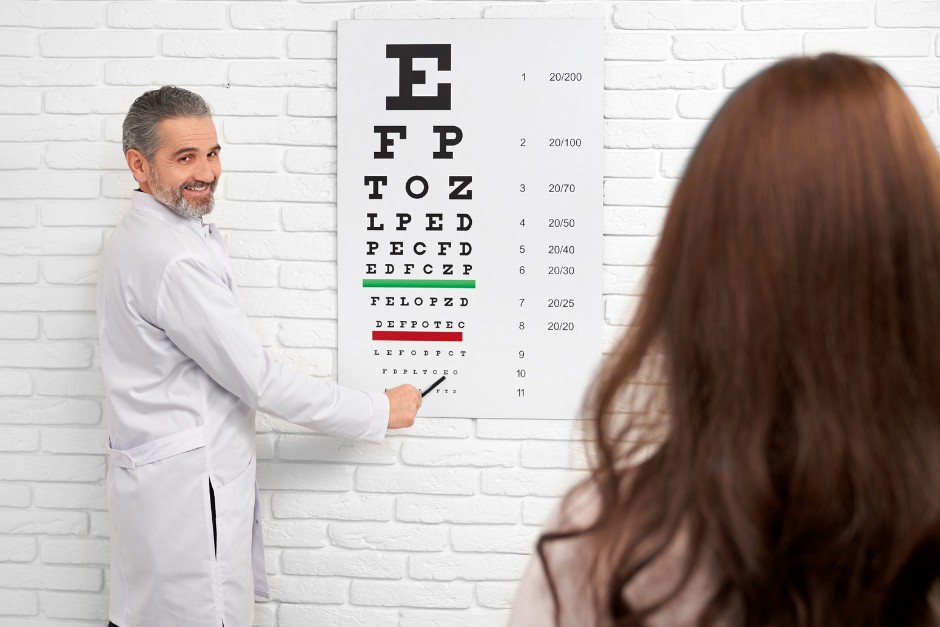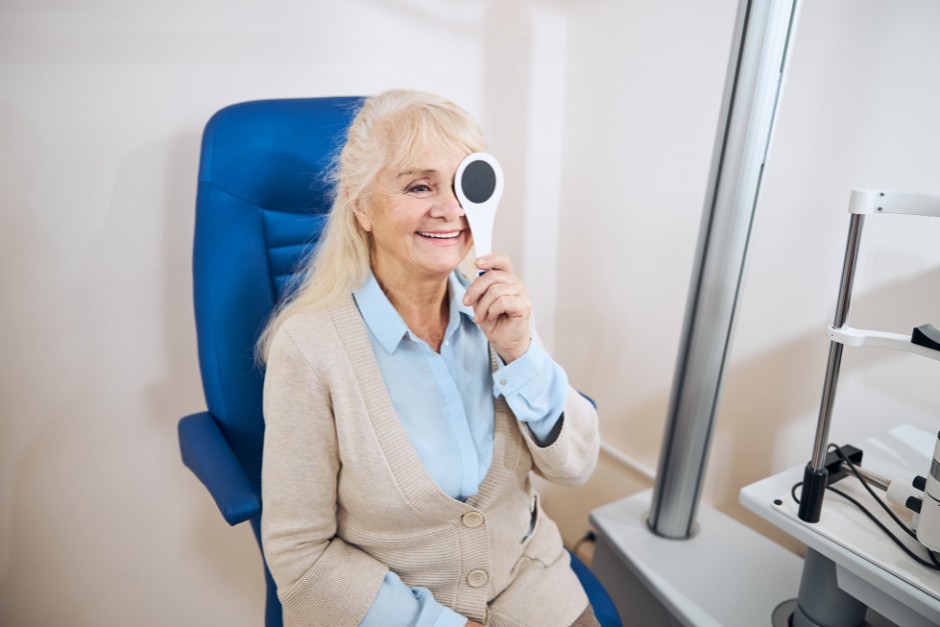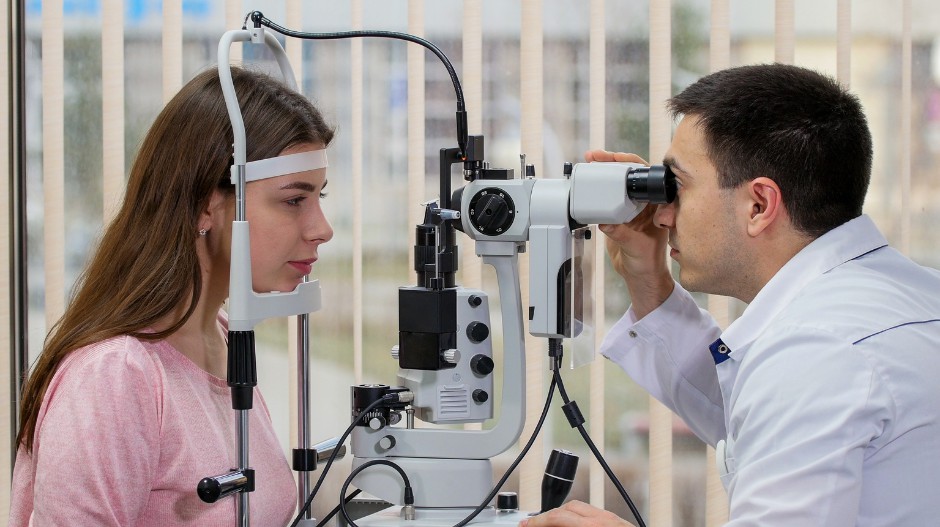When everything is working well, we tend to take our eyesight for granted, so much so that if eyesight does deteriorate and we suffer mild vision loss, it can be overlooked. It is important to understand variations in eyesight to know when it is time to seek medical help, or if anyone is having vision problems, what the impact of that means to them in terms of support. The way we define that is by visual acuity.
It’s a phrase you may have heard, but it is also something that can be confusing to understand. Let’s start at the beginning.
What is Visual Acuity?
 Visual acuity is simply the way we describe the ability to see fine detail and differentiate objects both close by and at a distance. If you have great visual acuity, individual objects will have sharp, clear outlines that are easily seen. Poor visual acuity will mean that objects will have fuzzy outlines and at a distance tend to blur into each other.
Visual acuity is simply the way we describe the ability to see fine detail and differentiate objects both close by and at a distance. If you have great visual acuity, individual objects will have sharp, clear outlines that are easily seen. Poor visual acuity will mean that objects will have fuzzy outlines and at a distance tend to blur into each other.
Even if you are not sure what visual acuity is, you have probably heard its measurements being used before. 20/200 vision is an example of the way visual acuity tests measure vision loss, and in this case, 20/200 would signify low vision that could be categorized as legally blind.
To get to those measurements, an eye chart test is used. This allows the fast, consistent assessment of vision health, with the ability to see and recognize ever smaller letters and symbols on the chart providing accurate information about each person’s sight. By using these standard charts, when we think about how to measure visual acuity there is an easy-to-understand guide. The score is a result of how far down the chart, and therefore how small the letters and symbols, an individual can clearly read.
Through this, we have a standardized measurement of vision loss that covers the effects on vision health of any number of conditions, injuries and so on. While vision problems tend to affect each individual differently, having this approach means that there is common understanding of the extent of problems anyone is suffering, and what that means in terms of ability.
How do Visual Acuity Tests Work?
 In their simplest form, visual acuity tests involve a patient reading an eye test chart from a specific distance. They use a standardized chart, with the most commonly used chart known as the Eye Snellen Chart. It contains a series of rows of letters, going from one large letter as the first row, with each subsequent row featuring more letters in a smaller size. Another frequently used chart is the random E test. Here, the chart uses a capital E that is facing in various directions makes up each row, with the same principle that the test sees how far down the chart, and how small the letters, the patient can read. This random E chart is often used with small children or anyone who struggles with identifying letters as an alternative to the Snellen chart.
In their simplest form, visual acuity tests involve a patient reading an eye test chart from a specific distance. They use a standardized chart, with the most commonly used chart known as the Eye Snellen Chart. It contains a series of rows of letters, going from one large letter as the first row, with each subsequent row featuring more letters in a smaller size. Another frequently used chart is the random E test. Here, the chart uses a capital E that is facing in various directions makes up each row, with the same principle that the test sees how far down the chart, and how small the letters, the patient can read. This random E chart is often used with small children or anyone who struggles with identifying letters as an alternative to the Snellen chart.
Patients stand 20 feet or 6 meters away from the chart, cover one eye and then read out the letters in each row. Once they have completed the test with one eye, it is repeated with the other eye covered. Each row of letters on the chart corresponds to a visual acuity score when read from a distance of 20 feet or 6 meters. The first row is 20/200, then 20/100 and so on down to 20/10. The last row the patient is able to read fully is their visual acuity score.
While an eye exam is usually carried out by an optometrist, they can also be administered by a general practitioner, despite such tests strictly being part of optometry. In all cases, the standardized charts and distances mean that test results are trusted and reliable. This is the case even in locations where the 20 feet distance is an issue. If it is not possible to stand that far away from a chart, mirrors are used to simulate the distance effect, allowing any facility to provide the established test and achieve results that are comparable to any other eye chart test.

While visual acuity tests seem relatively simple, they are an extremely reliable way to assess vision health, and quickly identify issues of low vision or vision loss. If you take a visual acuity test and fail to read anything but the first large letter, that means you have 20/200 vision, but what does that actually mean?
Visual Acuity and 20/200 Vision
Visual acuity scores all feature the same format, Distance from chart/normalized distance. The first number is the distance from the chart when reading, the second the distance someone with normal vision can see the object. The lower the number the better the vision health. So, someone with 20/20 vision can see things at 20 feet normal vision would allow them to see at 20 feet. A score of 20/200 means that from a distance of 20 feet, you see things in a way someone with normal vision can see from 200 feet away. Anyone with 20/200 score is considered to have severe vision loss and is legally blind.
 Because this kind of eye exam measures the performance of your vision health, it tells you how severe the low vision is, but not the cause. That is why it is so useful in understanding the overall effect on your vision, no matter the vision problems are behind it. While there are multiple reasons why you may have vision loss, the visual acuity test can be used for every patient to determine how restricted anyone’s vision is.
Because this kind of eye exam measures the performance of your vision health, it tells you how severe the low vision is, but not the cause. That is why it is so useful in understanding the overall effect on your vision, no matter the vision problems are behind it. While there are multiple reasons why you may have vision loss, the visual acuity test can be used for every patient to determine how restricted anyone’s vision is.
To achieve that 20/200 score, it means a patient could only identify the largest letter, the first row, and nothing else. But while 20/200 is, as we have said, considered legally blind, what does that mean in terms of practical vision in daily life?
When talking about vision health, the word blind brings about the idea that the patient can see nothing at all, however 20/200 vision means legally blind, which is not the same thing. Remember, these tests are taken with corrective lenses you may wear, so it really is a test of your actual vision in daily life. Only being able to see at 20 feet what normal vision shows at 200 feet is extremely restrictive and will impact every aspect of life from work to shopping to taking care around the home.
20/200 vision can also mean an impact on visual filed too, showing vision of no more than 20 degrees from the front, or a complete absence of peripheral vision. Again, this can be extremely restrictive, giving a tunnel vision effect that can make many tasks, even walking down a road, challenging.

Visual acuity is not a way to diagnose vision problems themselves, but a standard approach to measuring visual performance, so that anyone with vision health issues can understand the impact of the problem.
Tests are standardized, simple and fast to take, and a great way to gain understanding of how your vision performs overall. As a result, it helps optometry professionals assess the kind of support and visual aids that will help each individual in the most effective way.
Visual acuity allows medical professionals, government agencies and other necessary support systems, as well as individuals and their loved ones, to understand the visual loss being experienced, regardless of the underlying causes of that impairment. An essential aspect of caring for anyone with visual problems, the standardized tests and fast results mean that anyone with any kind of visual health issue can quickly understand the extent of the issue and access the support they need.

